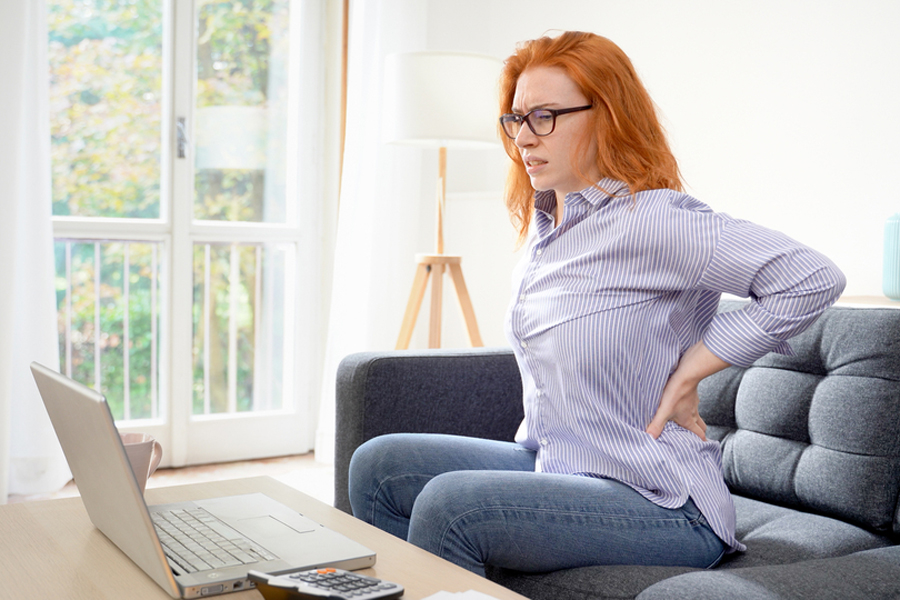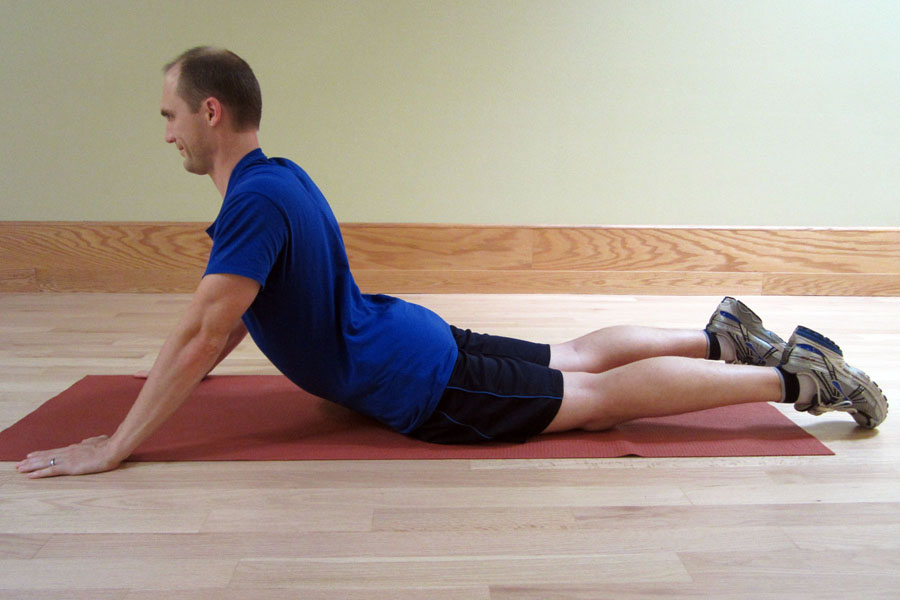The COVID-19 pandemic has transformed work and how it is done. Many people transitioned from working in an office setting into working remotely from home. Many employers have extended work-from-home (WFH) options as coronavirus cases continue to surge. With the shift of working environments, there has been a rise in back pain and other posture and structural driven pain from the neck, shoulders, arms, and low back. Much of this increase in pain is due to poor home working conditions and more sedentary behavior as we spend more time at home during the COVID-19 pandemic.
Low back pain (LBP) continues to affect nearly 80% of the U.S. population at one time or another, and it’s one of the top reasons for physician visits. Yet most of us do not currently seek care or in some cases, we cannot even get appointments into our medical providers because of the pandemic.
Fortunately, most LBP is mechanical–meaning it’s from a physical or structural cause not related to conditions such as cancer or infections. The problem with this type of LBP is that it usually comes back. People who have had an episode of mechanical LBP are 90% more likely to experience it again. It’s best to minimize your risk factors for experiencing LBP by being pro-active. This means that you can effectively self-treat YOUR low back pain without expensive medical visits, surgery, pills or injections.

How to Prevent Back Pain while Working from Home:
Fidget more. Limit the amount of sitting that you spend at one time. Since you’re at home, you can sit in different positions and in different locations. Get out of a sitting position every hour, and ideally, walk. If you aren’t able to walk, then try to shift your position at least once every twenty minutes.
Frequent position changes can help to avoid LBP. Don’t get stuck sitting for hours in the same position (particularly, if it’s uncomfortable or if you’re sitting with poor posture or with poor ergonomics). If you’re standing, then stand in different positions. Put your foot up on a stool, and then switch feet. Stand on different surfaces when possible (hardwood, carpet or softer padding like a standing mat). Variety is the key to avoiding low back pain.
Sit with good posture. If you’re going to sit for any period of time (regardless of the position), maintain your posture. Whenever possible, make sure that your knees stay below your hip level and that you are able to maintain your natural lumbar curve. Even if you don’t have an office chair at home, lean back in the chair (don’t slouch in your lower back). A great tool to help you with this is a lumbar roll. Ergonomics are important, so find ways to support your back while keeping your shoulders and neck in a relaxed position.
Stop looking down. Try to keep your devices at eye level, or slightly down. Don’t position them so that you have to look up at them. Limit the amount of time spent looking down whether that is from texting or reading a paper or even writing. If you tend to spend 30-40 minutes at a time looking down at your device, work toward reducing that time in half.
Stand more. A standing desk can be a wonderful luxury. At home, you can get creative and use a higher counter top for a make shift standing desk. Use boxes or books to improve the ergonomic positioning. The set up should allow you to look straight ahead when you work on your computer while in a position that your arms can hang down naturally with the forearms supported. No one can see your set up. Even if it’s not esthetically pleasing, it’s best to keep your body feeling good.
Take a break to exercise. Take advantage of being home and take a 15 minute stretching or yoga break. How about 10 minutes to roll out and utilize the foam roller or maybe a few core exercises like planks? Have some fun with it. My favorite 10 minute work-from-home exercise break includes: 25 air squats, 25 push-ups, 5 minutes stretching on the foam roller, and then a few press-ups.
I highly recommend press-ups. Lie on your stomach and perform 10 to 20 press-ups. Go slow and easy, but work your way up to full motion. Perform these multiple times a day as time allows. This is much easier to do when working from home versus an office environment.

Developing adequate strength in the lumbar extensor muscles and core musculature is the primary way to prevent initial episodes and to prevent reoccurring episodes of LBP. Research clearly indicates that the right targeted exercises are the most effective way to manage LBP.
If you’re not sure how to effectively and safely exercise your back or if you’re already experiencing low back pain, be sure to check out my Treating Low Back Pain (LBP) during Exercise and Athletics Book and Video Package.
For the approximate price of just one co-pay to see a doctor, you will receive my easy to read book with step-by-step instructions and a complete video package designed to help you prevent and self-treat reoccurring low back pain episodes.
Want to peek inside the video content? Watch now as I describe what really the “core” is and why it matters.
If you have a question that you would like featured in an upcoming video or blog post, please comment below or submit your question to contact@thePhysicalTherapyAdvisor.com. In case you haven’t already, be sure to subscribe to my e-mail list and YouTube channel as well as join our community on Facebook by liking The Physical Therapy Advisor!
